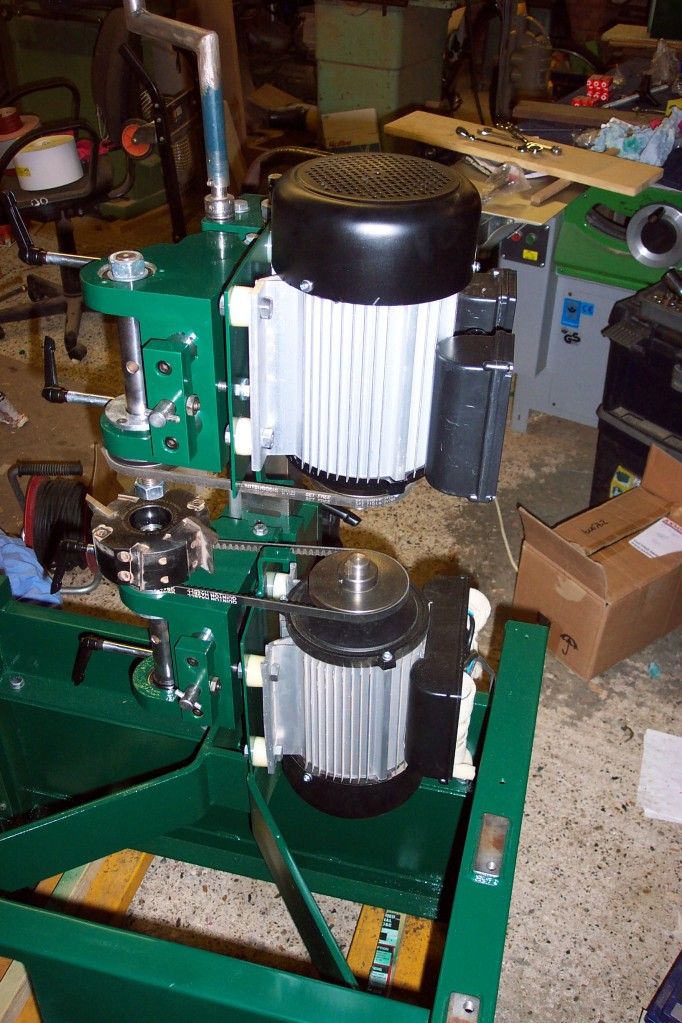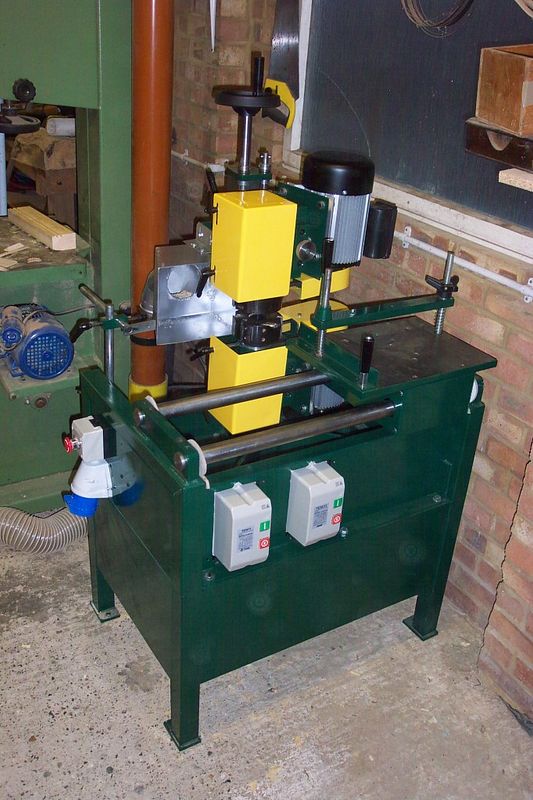katellwood
Established Member
For those that may be interested I have just brought a Multico tenoner back from the brink
Here is a pictorial diary of the project
As bought

The stripdown











And following new bearings, solid steel bed bars, Bristol levers and paint the rebuild










Two new single phase motors




And the finished machine


with new switchgear plus an emergency stop button



In addition these are a couple of parts I made for the machine which includes a new height adjuster

plus it would appear that the step shoulder adjustment is also adjusted with this same tool which especially for the bottom block was extremely hard to fit in around the sliding bed so I made this which works far better




The next item I intend to fabricate is a new extraction hood as the one fitted is not very efficient
Finally a big thanks to Bob (9fingers) who greatly assisted with a wiring diagram to wire the machine safely.
Here is a pictorial diary of the project
As bought

The stripdown











And following new bearings, solid steel bed bars, Bristol levers and paint the rebuild










Two new single phase motors




And the finished machine


with new switchgear plus an emergency stop button



In addition these are a couple of parts I made for the machine which includes a new height adjuster

plus it would appear that the step shoulder adjustment is also adjusted with this same tool which especially for the bottom block was extremely hard to fit in around the sliding bed so I made this which works far better




The next item I intend to fabricate is a new extraction hood as the one fitted is not very efficient
Finally a big thanks to Bob (9fingers) who greatly assisted with a wiring diagram to wire the machine safely.


































